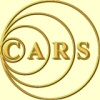 |
G0MWT, GX0MWT, GB5HF, GB5SM, GB2TAM, M2T, GB100MWT, G100RSGB & GB5RVA
CARS Meetings July - September 2015 |
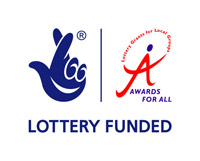
|
 |
G0MWT, GX0MWT, GB5HF, GB5SM, GB2TAM, M2T, GB100MWT, G100RSGB & GB5RVA
CARS Meetings July - September 2015 |

|
©Copyright CARS 2015
1st Sep 2015
Added Table Top Sale pictures
July Meeting
Tue 7-Jul-2015, 7.30-10pm
Oaklands Museum, Moulsham Street"Evolution of Submarine Cables"
By Bernard Logan
For the July meeting we had an excellent talk given by Bernard Logan entitled 'The Evolution of Undersea Cables'. Initially Bernard worked for Marconi at their Great Baddow Research site involved in radar controlled gunnery, but for the last 25 years or so undersea communication cables have been his domain. As the Chief Commercial Officer 0f MainOne, an active cable company and with an interest in others Bernard was able to speak with full authority on all things submersed.
The first practical electric telegraph systems went into service in England in 1839 and in the United States in 1844. Only a few years later, by the late 1840s, enterprising promoters in Britain were proposing undersea cables across the English Channel to France.
In 1850 a 25 mile cable was laid from Dover to Cap Gris Nez. This was the world's first working submarine telegraph cable; sadly it only lasted a few days before being cut by a French fisherman. A second single core cable with gutta percha insulation, and a hemp and iron wire covering was laid in 1851 lasted 10 years.
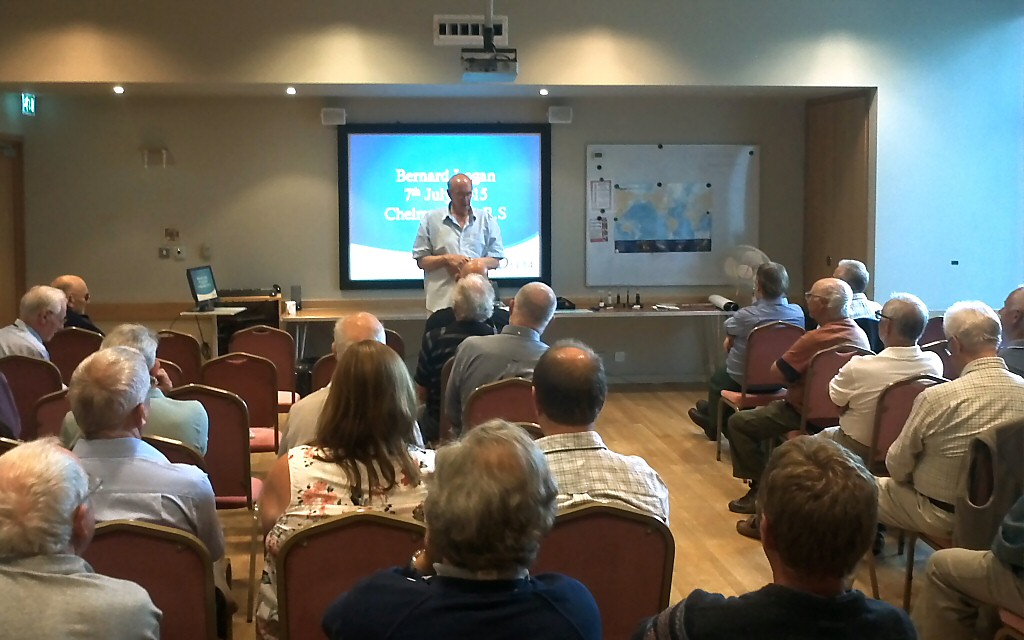
John G8DET introducing BernardCable Ships: Standard merchant ships were adapted for cable use, the very first cable ship being a small paddle steamer named Goliath, which with a drum of cable mounted on deck laid the cross-Channel cable of 1850. At the other end of the spectrum, the Great Eastern, the largest ship ever built at the time, was used for the Atlantic cables of 1866 and future years. Many attempts to lay an Atlantic cable had failed for many reasons and fortunes had been lost by rich investors. One such transatlantic cable was laid by businessman Cyrus West Field in 1865, it operated for only three weeks; subsequent attempts in 1866 were more successful. The 1866 cable was laid between Southern Ireland and Newfoundland.
Obviously great care and much skill is required in laying the cable to avoid very costly breakages and many unsuccessful attempts we made. Complicated seabed surveys were carried out to ensure the best possible routes. Near coastlines, quite often these days to protect the cables they are laid in trenches rather than on the sea bed. This uses a highly specialised machine towed by the ship, utilising a very high pressure water jet to make the trench, lay the cable and then cover it up.
Cable Laying ships and techniques have changed over the years... (Photo by Colin G0TRM)
Modern Cable: In modern times all cables now being laid are fibre optic and are capable handling thousands of simultaneous telephone calls, emails and vast amounts of data. These days fibre optic amplifiers are available and the current practice is to place one every 160 km or so, they are however extremely expensive, each one costing many thousands of pounds.
History of more recent developments as fibre optics replaced coax
Transatlantic undersea cables are known as TAT cables. TAT 1 in 1956 was a coaxial cable, carrying 707 simultaneous calls. TAT 7 was the last coaxial cable still in use in 1994 and carried 4000 calls. Improvements continued and 1988 saw TAT 8 which was the first transatlantic fibre optic cable and carried an amazing 40,000 simultaneous telephone conversations.
In 1997 various Wavelength Division Multiplexing (WDM) systems were introduced. WDM enables a single fibre to carry many additional channels. Each light source is divided into distinct wavelengths (colours) and each wavelength can carry information, currently some 40 channels are in use on each fibre, and this figure is expected to double or treble as the technology improves. The highly specialised terminal equipment is obviously very expensive, but not as expensive as laying many new cables to achieve the equivalent capacity. 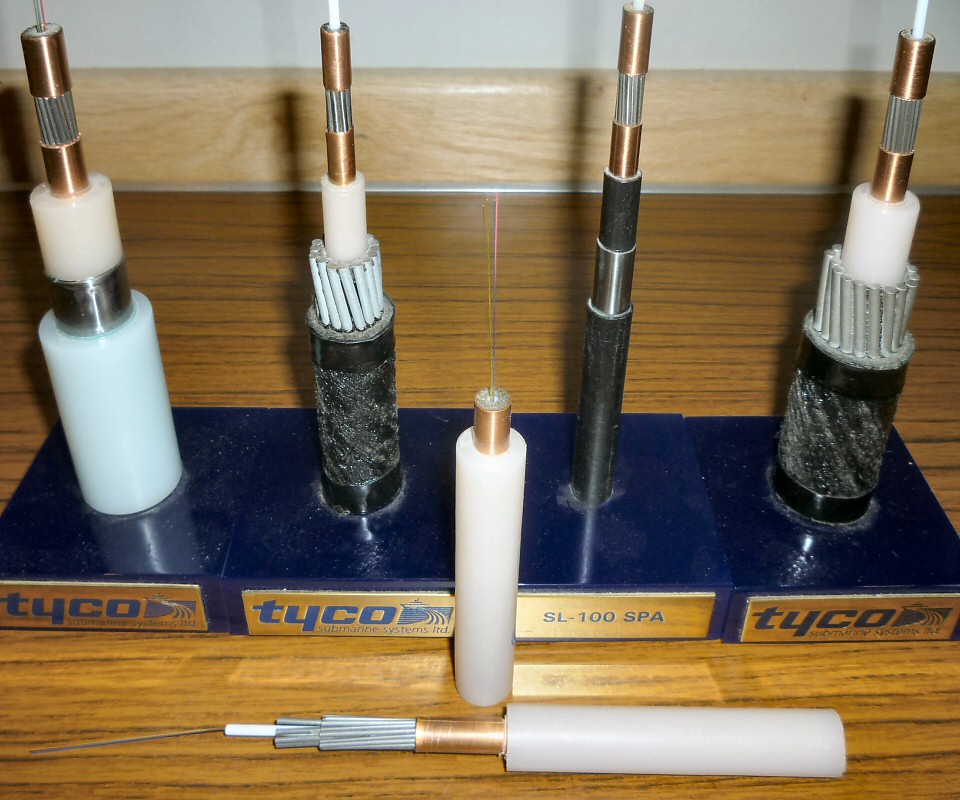
A variety of modern cables with their optical fibres at the centre
Current Work: Bernard is currently involved with MainOne, a modern cable along the west coast of Africa. Starting in Portugal the first phase of 7,000km high speed cable is in place and reaches to Nigeria, with drop-off points in between. Phase 2 will continue to South Africa. The submarine cable currently delivers high speed bandwidth of approximately 2Tbps. 5Tbps speeds are now available. Today the vast majority of all internet traffic travel by undersea cable with just a small number going via satellite. The map below can be can be examined further onlien to reveal the astonishing network.
Cables everywhere - click to see them on SubmarineCableMap.comDuring the break an extra feature was Handheld Radio Programming by Charlie M0PZT. After the break the CARS Raffle got underway. Carl had been busy organising prizes and selling tickets. An extra prize was donated by Bernard.
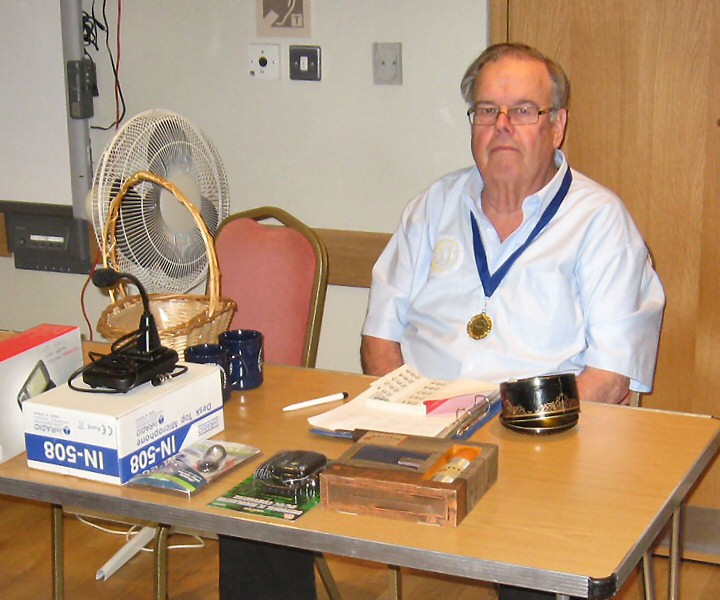
The Raffle - Organised by Carl G3PEM, drawn by John G8DET
A Raffle Winner - Graham G7JYD clutching his raffle prize - lots of componentsOne final matter was the traditional presentation of a CARS Mug to the speaker...
Bernard being presented with a CARS Mug by John G8DET(Photo by Colin G0TRM)Our grateful thanks to Bernard for a most interesting and absorbing talk. We learnt much about just what is involved in sending an email almost instantaneously, from one side of the world to the other.
Useful Links:-
Cable Map Main One
August Meeting
Tue 4-Aug-2015, 7.30-10pm
Oaklands Museum, Moulsham Street"Constructors Competition"
By CARS MembersThe August meeting was the annual time to show what you had been made this year - be it a Linear, QRP Transceiver, an Aerial or some Radio Software. CARS accept all sorts of entries (and have done so in the past) from still photographs to video clips. The only real Rule is that it must be electrically SAFE.
Forty people attended to see a wide variety of entries which included software and hardware creations. CARS President Carl, G3PEM was the host for the evening. This year there were seven club members who entered projects on the night; once again they made the evening:-
- Tony G4YTG - a 'Skeleton Discone Aerial' constructed with welding rods.
- Charlie M0PZT - entered his PZTLog sofwtare which he wrote and refined over the last three years
- Bruce M0XBS - his first entry was a Valve Amplifier constructed some years ago
- Bruce M0XBS - also entered a MKARS80 kit - an 80 metre QRP transceiver which had been used on club nets
- Colin G0TRM - Colin moved away from his Morse keys and constructed 'A washing line adjustable end fed wire aerial', including pegs
- Steve G4HSK - A 2m Transverter produced from a G4DDK Anglian kit in a homebrew metal case
- Peter G3SUY - A Mobile Whip with separate coils for 160m, 80, and 40 metres was his entry for this year.
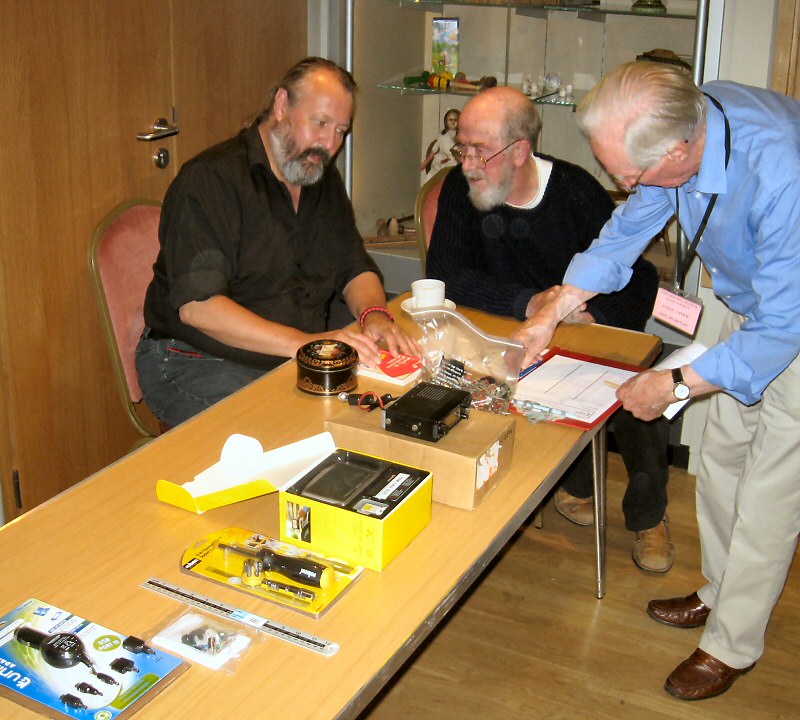
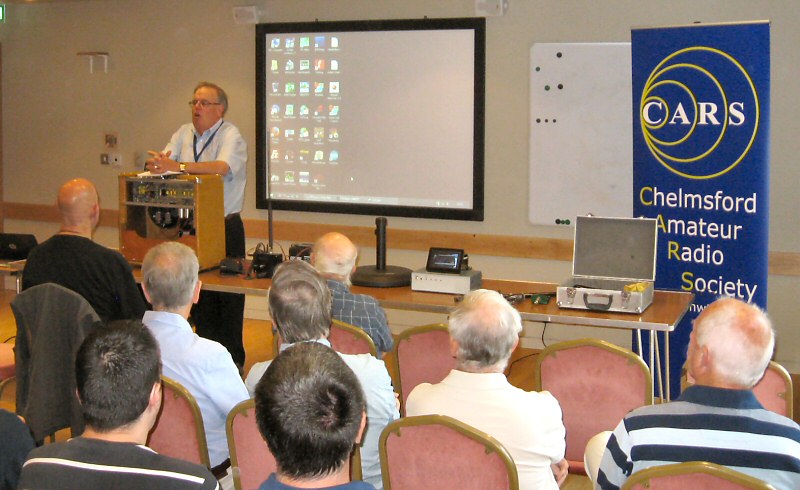
Chris G0IPU (sat with Raffle Prizes) checking arrangements and Carl G3PEM introducing the evening
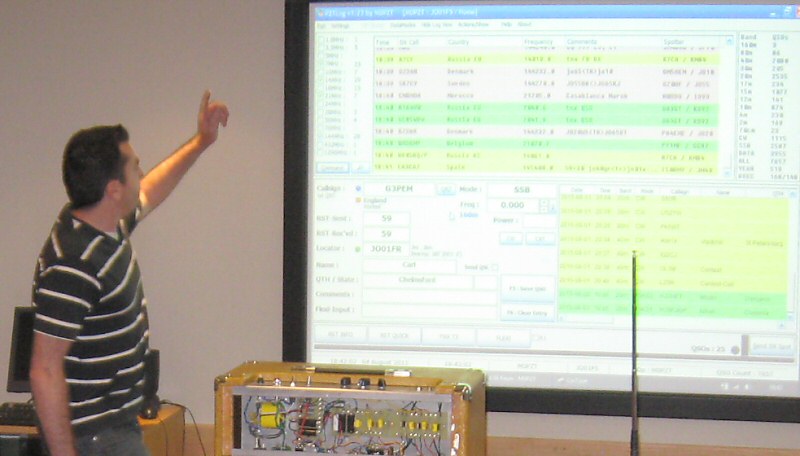
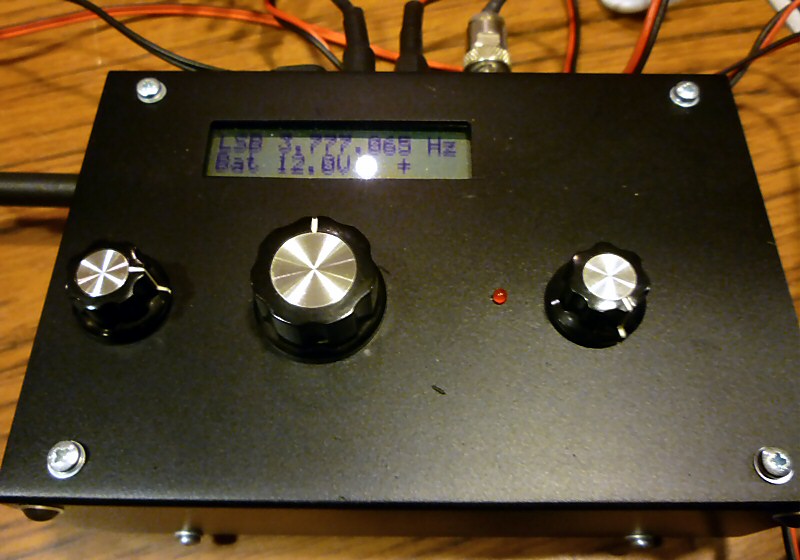
Charlie describing his PZTLog software - and a MKARS80 80m transceiver kit were amongst the entriesDuring the tea break members were able to have a closer look, chat with the entrants and cast their votes, which was then tallied up by Carl.
Members were able to discuss the entries during the tea breakAfter the break and raffle, Carl announced the results from the audience votes. Prizes were awarded to the top three entries as well as a special prize for the best new entrant who had not won a prize before.
The first prize was £15 and will also be recognised by Charlies name being added to the Society M1FDE Shield which will be presented at the October AGM. Well done and many thanks to all those who entered.

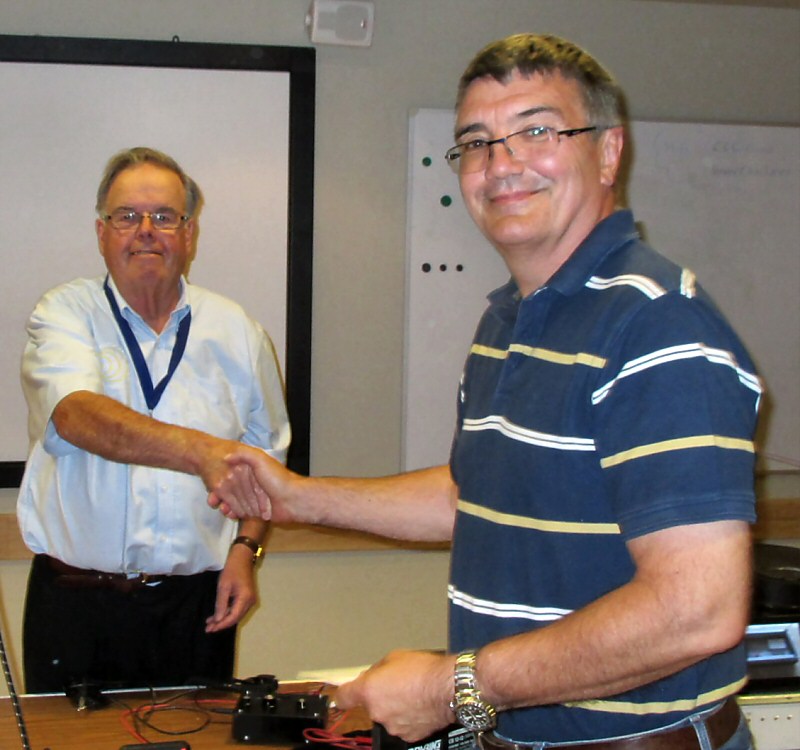
New: Steve G4HSK and his 10m-144MHz Transverter (The 'Anglian' by Sam G4DDK) won the First-timers prize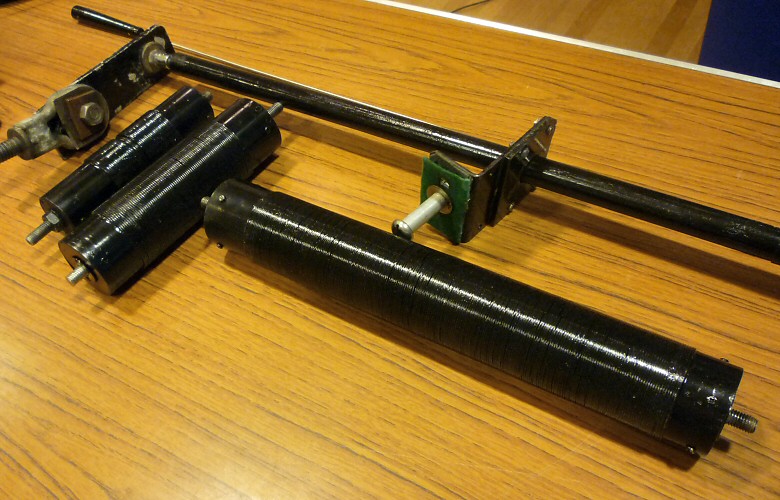
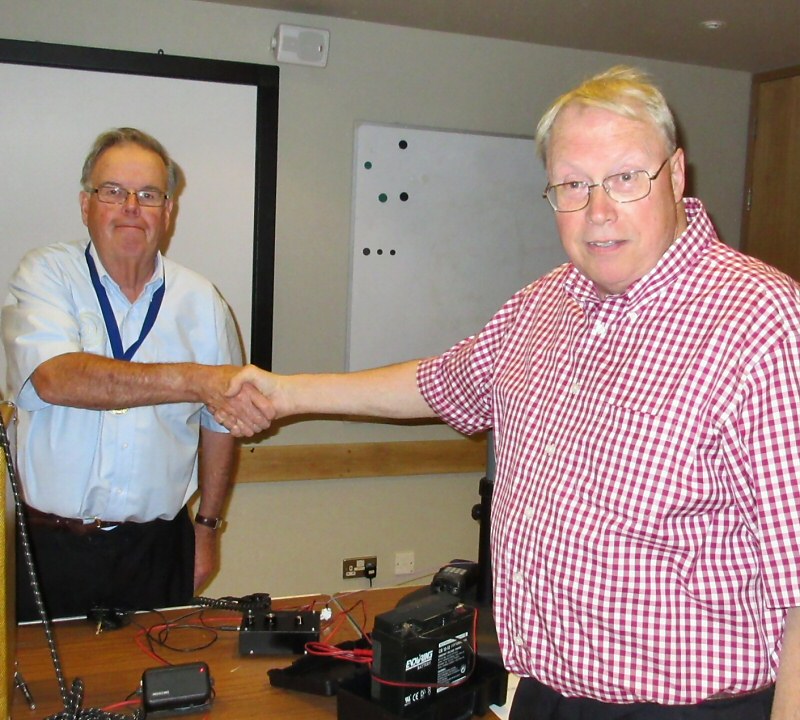
3rd: Peter G3SUY won third for his Mobile Whip (inc nice loading coils)

2nd: Bruce M0XBS and his Valve Audio Amp came second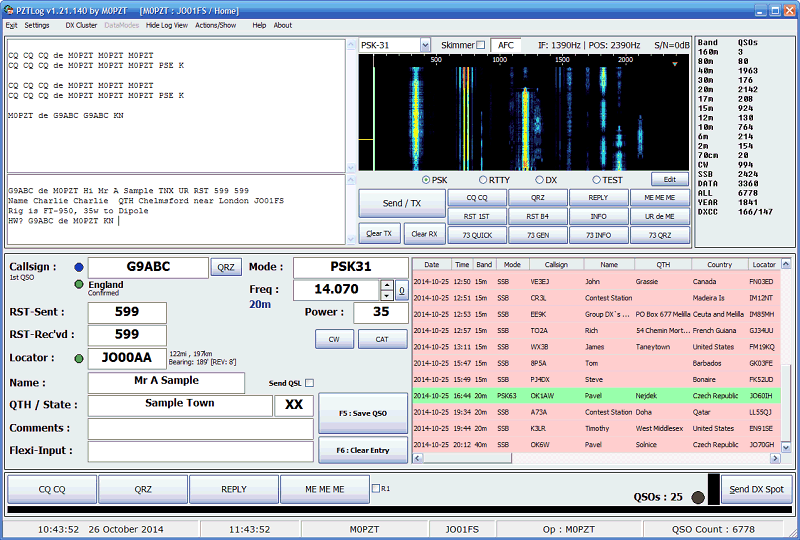

1st: The very capable (and free!) PZTLog by Charlie M0PZT won First prize
September Meeting
Tue 1-Sep-2015, 7.30-10pm
Oaklands Museum, Moulsham Street"Table Top Sale"
By CARS Members & VisitorsIn order to assist with construction and recycling, our September meeting was a Radio and Electronics Tabletop Sale. Having not had one for a few years, Colin G0TRM coordinated the promotion effort and it was well attended by both sellers and buyers.
All sorts of Amateur, Audio, Electrical/Electronic, Photographic, Computer and associated equipment items were on offer and some were speedily snapped up in the first few minutes of the 7.30 start time. Many other items also disappeared, but only of course after due deliberation in some cases. Judging by the smiles on some faces a few members were very pleased with their evening outing. We were very pleased to welcome members from other Clubs in the area and we had sellers from Ipswich, from Epping and from London.
Bargains galore! (Photo by Murray G6JYB)
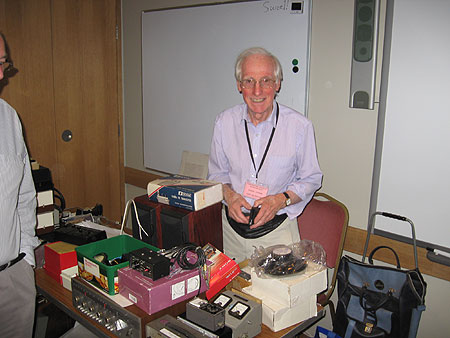
Sale organiser Colin G0TRM and Raffle Organiser Carl G3PEM (Photos by John G8DET)
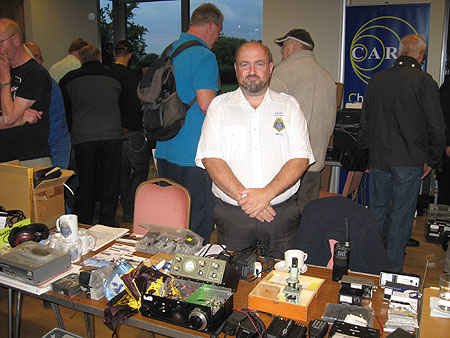
Happy Punters! - Marc G0TOC and Steve G4GHO
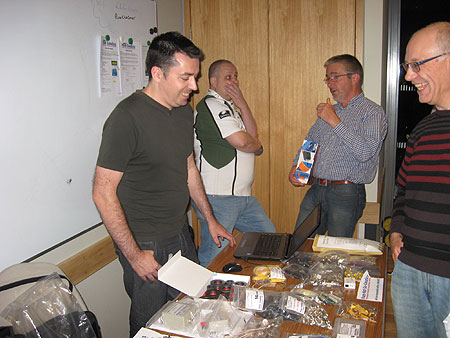
An enjoyable evening for various CARS members
Packing up - anyone want a teapot? (Photo by Murray G6JYB)Thanks to CARS members who booked tables, to those who purchased things, to David and Myra for refreshments, to Carl for the successful raffle and to Chris G0IPU as master of ceremonies. Overall, sufficient funds were raised to more than cover expenses. We were asked if we would be holding a similar event next year. It's a little too early to give an answer, as we had sold our crystal ball earlier in the evening...
To RETURN to the Meetings Page - Click Here
To RETURN to the CARS Home Web Page - Click Here